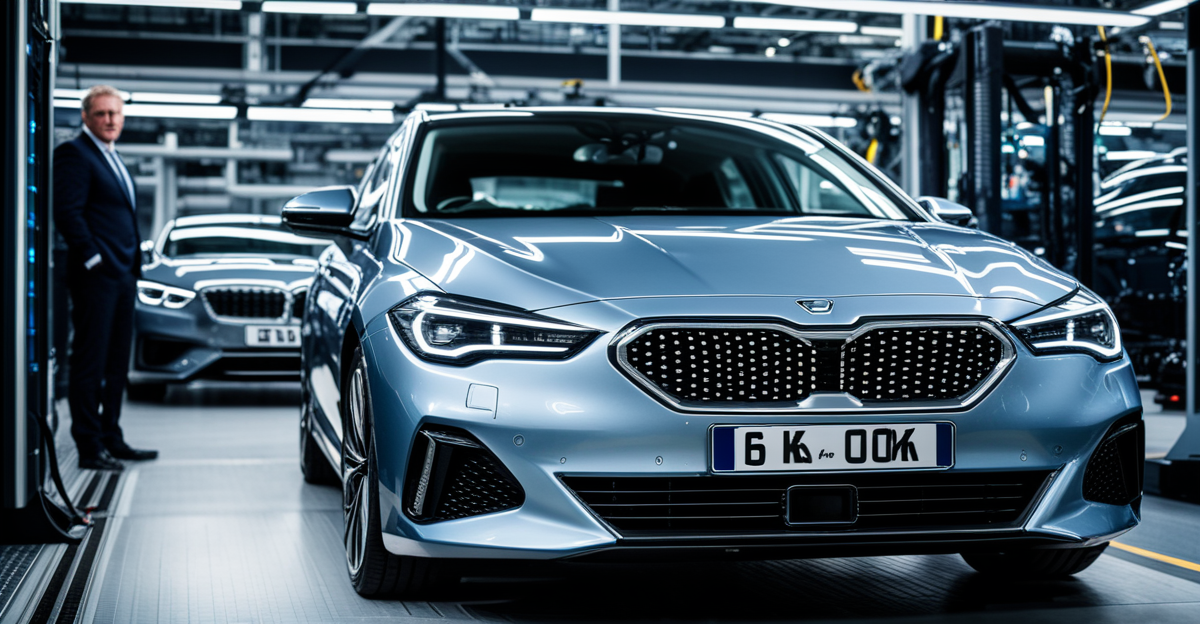Addressing Cybersecurity Threats in the UK Automotive Industry
The UK automotive sector faces unique cybersecurity challenges as vehicles become increasingly connected and software-dependent. UK automakers cybersecurity efforts must mitigate risks that compromise not only vehicle functionality but also driver safety and privacy. Common threats include ransomware targeting manufacturing systems, unauthorized remote access to vehicle control modules, and data breaches exposing sensitive customer information.
Automotive cybersecurity strategies emphasize secure vehicle design, integrating protection measures from the earliest development phases. This security by design approach helps prevent vulnerabilities that cybercriminals could exploit. Protecting in-vehicle networks, infotainment systems, and telematics is crucial because these components often serve as entry points for attackers.
This might interest you : How Does the UK Automotive Industry Influence Global Trends?
The significance of data protection in the UK car industry threats landscape extends beyond chips and sensors. It includes safeguarding drivers’ personal data to comply with legal requirements and avoid reputational harm. Recent breach examples illustrate how cyber attacks can disrupt production lines or lead to costly recalls. Therefore, robust cybersecurity is foundational to the industry’s resilience and trustworthiness in an evolving threat environment.
Addressing Cybersecurity Threats in the UK Automotive Industry
Understanding the cybersecurity threats facing the UK automotive sector is crucial for safeguarding connected vehicles and consumer data. UK automakers cybersecurity concerns revolve around attacks targeting vehicle control systems, infotainment platforms, and communication networks. These risks include ransomware, unauthorized remote access, and data theft, which may compromise safety or privacy.
Also read : Why Are Electric Vehicles Gaining Popularity in the UK Automotive Market?
A key challenge unique to the UK car industry threats is balancing innovation with robust security. Advanced features like autonomous driving and vehicle-to-everything (V2X) communication expand attack surfaces, increasing vulnerability to sophisticated breaches. Recent high-profile incidents have underscored the importance of securing software supply chains as attackers exploit third-party components.
Adopting secure vehicle design principles is vital. Automotive cybersecurity strategies emphasize embedding security from the earliest stages of design to protect both hardware and software layers. Protecting in-vehicle data through encryption and secure storage mitigates risks of sensitive information exposure. Overall, the UK automotive industry’s approach must integrate continuous risk assessment and proactive defense to address these emerging cybersecurity challenges effectively.
Technological Measures Adopted by Automakers
UK automakers cybersecurity efforts heavily rely on continuous vehicle software updates to patch vulnerabilities promptly. Regular updates help prevent exploitation of software flaws that cybercriminals often target. The integration of security by design principles ensures that cybersecurity is embedded throughout the vehicle’s development, from coding to system integration. This approach reduces risks in complex car systems that combine hardware and software.
Advanced car cybersecurity technology is crucial. Encryption techniques and secure communication protocols protect data exchanged within vehicles and between vehicles and external networks. For instance, embedded security systems in infotainment and telematics prevent unauthorized access. Implementing a secure development lifecycle involves rigorous testing and validation phases to identify weaknesses early.
Automotive cybersecurity strategies also emphasize firmware security, which governs the basic operation of vehicle control modules. Protecting firmware against tampering is vital because compromised firmware can lead to severe risks, including unauthorized control over vehicle functions. These technological measures collectively reinforce cybersecurity resilience, addressing the increasing cyber threats the UK car industry faces.
Technological Measures Adopted by Automakers
Automotive cybersecurity strategies in the UK heavily focus on vehicle software updates as a primary defense against evolving threats. Regular updates patch vulnerabilities in both firmware and software components, reducing risks from known exploits. These updates are often delivered via secure over-the-air (OTA) mechanisms, ensuring prompt protection without requiring dealership visits.
Adopting security by design principles remains foundational to UK automakers cybersecurity. This involves embedding security measures throughout the development lifecycle—from concept to deployment. Using a secure development lifecycle helps identify and address weaknesses early, integrating embedded security systems that safeguard vehicle control units and communication networks.
Encryption and secure communication protocols are increasingly standard in connected cars. These technologies preserve data confidentiality between vehicle sensors, infotainment systems, and external networks, addressing UK car industry threats like data interception or unauthorized access. Employing end-to-end encryption and secure key management enhances trust in vehicle-to-everything (V2X) communications.
Together, these technological measures provide a resilient framework that can adapt as attackers develop new tactics, ensuring UK automakers maintain robust cybersecurity defenses.
Addressing Cybersecurity Threats in the UK Automotive Industry
The UK automotive sector faces distinct cybersecurity challenges that demand tailored solutions. UK automakers cybersecurity efforts must address risks spanning from manufacturing systems to connected vehicle networks. Among the most critical UK car industry threats are ransomware attacks on production facilities, unauthorized access to vehicle control modules, and breaches exposing sensitive driver data.
Recent breach incidents highlight the impact of inadequate protections, such as compromised software supply chains leading to disrupted operations and expensive recalls. These examples underline the urgent need for comprehensive automotive cybersecurity strategies that embed security throughout the vehicle lifecycle.
One pillar of these strategies is secure vehicle design, which integrates cybersecurity early in development to prevent vulnerabilities. This includes safeguarding hardware components like sensors and control units and deploying strong data protection measures to shield personal information. Encryption and secure storage solutions are essential to mitigating risks related to data theft.
Ultimately, UK automakers cybersecurity approaches must balance innovation with resilience, ensuring that evolving threats do not compromise vehicle safety or customer trust in a highly connected and digitally dependent industry.
Addressing Cybersecurity Threats in the UK Automotive Industry
The UK automotive sector encounters distinct cybersecurity challenges due to increasing vehicle connectivity. UK automakers cybersecurity efforts must tackle diverse UK car industry threats such as ransomware attacks, unauthorized remote access, and data breaches. These risks not only jeopardize vehicle functionality but also driver safety and data privacy.
Recent breaches have illustrated how compromised manufacturing systems can halt production, while unauthorized access to vehicle control modules risks hijacking critical functions. Automotive cybersecurity strategies emphasize secure vehicle design—embedding security consistently throughout the development lifecycle—to reduce these vulnerabilities. This approach helps UK automakers cybersecurity teams anticipate threats and integrate protections early.
Protecting personal and operational data remains critical. Data encryption, secure storage, and strict access controls mitigate risks of sensitive information exposure. Additionally, complying with data protection laws strengthens trust between manufacturers and consumers. By addressing these layered risks with holistic automotive cybersecurity strategies, the UK car industry can better defend vehicles and associated systems against emerging cyber threats.
Addressing Cybersecurity Threats in the UK Automotive Industry
The UK automotive sector faces distinct cybersecurity challenges that require precise and proactive responses. Among the most pressing UK car industry threats are ransomware targeting manufacturing lines, unauthorized access to vehicle control units, and breaches exposing sensitive driver data. Such attacks can disrupt production, compromise vehicle safety, and erode consumer trust.
Recent cybersecurity incidents reveal how attackers exploit vulnerabilities in software supply chains or connected vehicle networks. These breaches underline the need for rigorous automotive cybersecurity strategies that incorporate continuous risk assessments and mitigation tactics throughout the vehicle lifecycle.
A central element is the implementation of secure vehicle design, embedding security measures at the earliest development stages. This approach helps prevent vulnerabilities in hardware components such as sensors and control modules. Additionally, robust data protection—including encryption and secure storage—is essential for safeguarding personal and operational information from cyber threats.
UK automakers cybersecurity strategies must balance innovation with defense. By integrating security-by-design and prioritizing data protection, the industry can address evolving risks effectively while maintaining vehicle safety and customer confidence.
Addressing Cybersecurity Threats in the UK Automotive Industry
The UK automotive sector faces complex cybersecurity challenges shaped by increased connectivity and sophisticated cyber threats. UK automakers cybersecurity efforts focus on mitigating a spectrum of UK car industry threats, including ransomware attacks, unauthorized remote access, and data breaches that jeopardize vehicle safety and driver privacy.
Recent breach examples reveal vulnerabilities in manufacturing systems and software supply chains, leading to disrupted production and costly recalls. These incidents emphasize the importance of comprehensive automotive cybersecurity strategies that integrate protection from concept through deployment.
A central element is secure vehicle design, where cybersecurity is embedded early to eliminate vulnerabilities in hardware and software components. This strategy involves layered defenses such as encryption, secure storage, and strict access controls to protect sensitive data throughout the vehicle lifecycle.
Automotive cybersecurity strategies also prioritize continuous risk assessment to keep pace with evolving UK car industry threats. By proactively addressing these challenges, UK automakers cybersecurity measures aim to bolster resilience, ensuring vehicle safety and maintaining consumer trust in an increasingly digital automotive environment.
Addressing Cybersecurity Threats in the UK Automotive Industry
The UK automotive sector faces a complex array of cybersecurity threats that require targeted UK automakers cybersecurity responses. Predominant UK car industry threats include ransomware assaults on manufacturing infrastructure, unauthorized intrusions into vehicle control modules, and exposure of sensitive driver data via breaches. These risks disrupt production and directly jeopardize vehicle and occupant safety.
Automotive cybersecurity strategies prioritize secure vehicle design, embedding protective measures early in development to prevent hardware and software vulnerabilities. Effective design mitigates risks originating from sensors, control units, and communication systems. This approach reduces the likelihood of attackers exploiting weak points within complex vehicle architectures.
Data protection is a critical component in combating UK car industry threats. Securing personal and operational information through robust encryption and secure storage protocols helps prevent data leaks and maintain regulatory compliance. Cybersecurity strategies must also consider the evolving threat landscape by integrating continuous risk assessments and proactive defense mechanisms.
By addressing these unique challenges with layered security in vehicle design and data protection, UK automakers cybersecurity efforts enhance resilience against sophisticated cyberattacks while safeguarding consumer trust in an increasingly connected environment.
Addressing Cybersecurity Threats in the UK Automotive Industry
The UK automotive sector faces distinct UK car industry threats demanding tailored responses. These include ransomware attacks disrupting manufacturing lines, unauthorized remote access risking control of vehicle systems, and data breaches compromising sensitive driver information. Notably, recent cybersecurity incidents have exposed vulnerabilities in software supply chains, leading to costly production halts and reputational damage.
UK automakers cybersecurity efforts emphasize the integration of secure vehicle design at the earliest stages. This proactive measure embeds protections into both hardware and software components, reducing exploitable weaknesses. Automotive cybersecurity strategies prioritize encryption and secure storage to safeguard personal and operational data, ensuring compliance with privacy regulations and promoting consumer trust.
Furthermore, continuous risk assessments form a core part of these strategies to anticipate and counter evolving threats. By adopting a multi-layered approach—combining secure design principles with robust data protection—UK automakers enhance resilience against increasingly sophisticated cyberattacks. This comprehensive framework is essential for maintaining vehicle safety, operational continuity, and customer confidence within an expanding connected vehicle landscape.
Addressing Cybersecurity Threats in the UK Automotive Industry
The UK automotive sector faces multifaceted cybersecurity challenges that require tailored automotive cybersecurity strategies. Among the most critical UK car industry threats are ransomware attacks targeting manufacturing infrastructure, unauthorized access to vehicle control systems, and data breaches exposing sensitive driver information.
Recent breaches highlight how attackers exploit vulnerabilities in software supply chains and connected vehicle networks, causing production delays and costly recalls. Addressing these threats demands that UK automakers cybersecurity measures embed protections throughout the vehicle lifecycle. This includes applying secure vehicle design principles, which incorporate security from the earliest development stages to reduce hardware and software vulnerabilities.
Data protection is equally vital. Employing robust encryption and secure storage safeguards sensitive data and helps maintain compliance with data privacy laws. These measures mitigate risks of data interception and unauthorized access, thus preserving customer trust.
By continuously assessing risks and integrating layered defenses, UK automakers cybersecurity approaches can effectively confront evolving threats. This comprehensive focus ensures that the industry balances technological innovation with strong security to protect both vehicles and consumer data alike.







